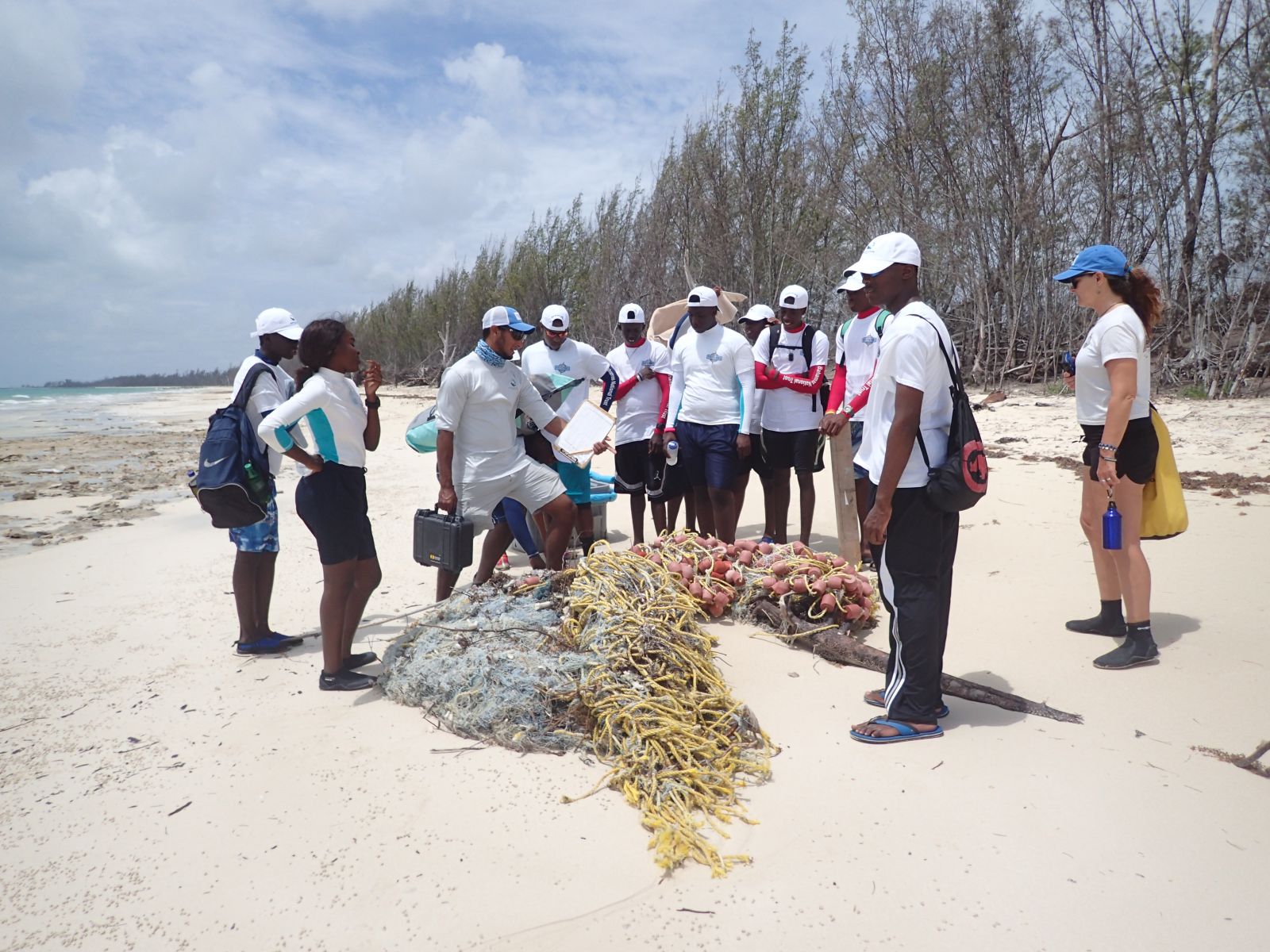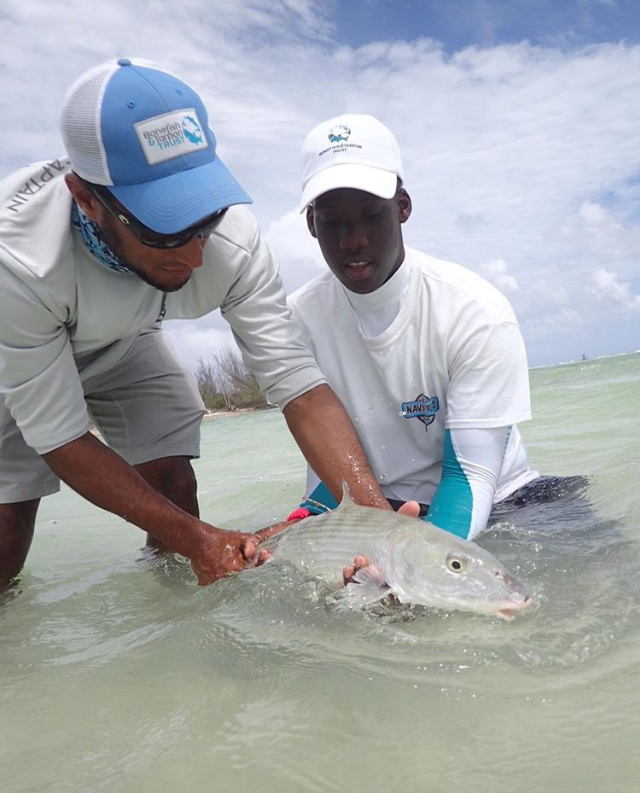Article and Photos by Nick Roberts, BTT Director of Marketing & Communications
In the decade since Bonefish & Tarpon Trust launched the Bahamas Initiative, the organization has made great strides in conserving bonefish populations and their habitats. Working in conjunction with lodge owners, fishing guides, NGOs, and The Bahamas Government, BTT has successfully used research findings to produce meaningful conservation outcomes. Most notably, the collaborative research contributed to the designation of six new national parks that protect adult and juvenile habitats, as well as spawning sites. BTT is currently in the process of identifying more spawning sites and vulnerable bonefish habitats, with the aim of including this information in a pending proposal for additional parks.

Actionable research is central to BTT’s mission, as is educational outreach. As part of its Bahamas Initiative, BTT has educated guides and anglers, who make up the core of the flats fishery, about the best handling practices for bonefish, since handling the fish properly increases its chance of survival post release. BTT is now taking steps to expand the educational component of the Bahamas Initiative by working with Bahamas National Trust to develop a new flats ecosystem curriculum for Bahamian students, many of whom have not had the opportunity to explore a flats habitat or see a school of tailing bonefish. While several marine-based education programs are available in The Bahamas, none focus on flats ecology and conservation, making the new flats curriculum truly unique.
“The flats environment is often overlooked and easily dismissed, compared to the charismatic coral reefs and other marine environments,” says Shelly Cant-Woodside, BNT’s Director of Science & Policy. “But this area where the land meets sea is so vital to many commercially important species, such as bonefish, as well as to endangered species of shore birds, like the piping plover. There is a great gap in knowledge across the country in this topic, therefore the Bahamas National Trust was pleased to partner up with Bonefish & Tarpon Trust to develop such a curriculum.”
The new flats curriculum builds on earlier educational outreach efforts by Bahamas Initiative Manager Justin Lewis, who frequently gives flats ecology and conservation presentations at schools across the country, leads field trips for students, and participates in teacher workshops. The curriculum, designed for students 10 to 17 years old, focuses on the cultural, economic and historical significance of the bonefish fishery, the importance of healthy habitats, habitat conservation, and the best catch and release practices. It also includes field research and projects to further engage students in the content and deepen their appreciation for the environment. The curriculum will be taught through BNT’s Discovery Club, an afterschool program for students who are interested in environmental science and conservation, with 70 club chapters spread across the archipelago, and in Bahamian schools.
“Bonefish & Tarpon Trust has been a tremendous partner, who has had an impact on our Discovery Club program on several levels,” says Portia Sweeting, BNT’s Director of Education. “Justin Lewis has lectured and led field trips and now the grant from BTT will cover the cost of educational materials. The new flats ecosystem curriculum will allow young people to learn the ecological, economic and cultural value of the flats.”
On a Saturday in late April, Lewis gave a presentation on the importance of bonefish to the Bahamian economy to a group of fourteen student “Navigators” in the Freeport chapter of the Discovery Club, led by BNT Outreach Officer, Cheri Wood. Following the presentation, Lewis took the group to a remote bonefish flat on the north coast of Grand Bahama, along the way pointing out a tangled, barnacle-covered net—likely washed up by a storm—that had killed countless fish, including bonefish. Providing the Navigators with a real-life example of the threats facing the nation’s bonefish fisheries, worth over $141 million annually, underscored his earlier lessons about the importance of properly managing the resource and protecting flats habitats.
 According to Ms. Wood, it’s not only the students who will benefit from the new curriculum—so will their teachers. “When students and teachers of The Bahamas begin to understand the cultural and economic importance of our delicate ecosystems, such as flats, they are more likely to care about these areas rather than view them as expendable,” she says. “This leads to a healthy, caring society that is more likely to engage in sustainable practices that benefit the local community as well as contributing to the overall sustainability of the nation.”
According to Ms. Wood, it’s not only the students who will benefit from the new curriculum—so will their teachers. “When students and teachers of The Bahamas begin to understand the cultural and economic importance of our delicate ecosystems, such as flats, they are more likely to care about these areas rather than view them as expendable,” she says. “This leads to a healthy, caring society that is more likely to engage in sustainable practices that benefit the local community as well as contributing to the overall sustainability of the nation.”
The students weren’t just on a field trip to view the flats, they were also put to work using a large seine net to capture bonefish as part of BTT’s tagging program. During this sampling, they caught two tagged bonefish. One of the bonefish had been tagged by Lewis on the same flat only two weeks earlier, illustrating for the students how small the home ranges of bonefish are, meaning that any damage done to a flat directly impacts the fish that live there. The opportunity to assist Lewis with his fieldwork has given students like Gareth Kirkby, a senior at Bishop Michael Eldon School in Freeport, greater insight into the economic and environmental value of the flats ecosystem and the country’s bonefish fisheries.
“Searching for the bonefish and then catching and tagging them was an amazing experience,” says Gareth. “I believe it is very important to educate young Bahamians, like myself, about our flats, since they bring in a lot of revenue for the island, and we will soon be the ones in charge of taking care of them.”




